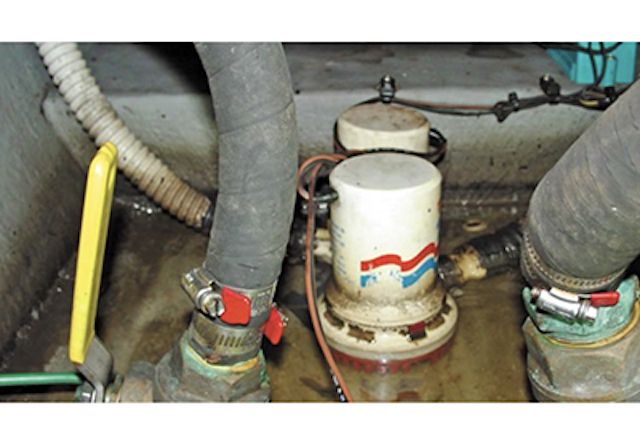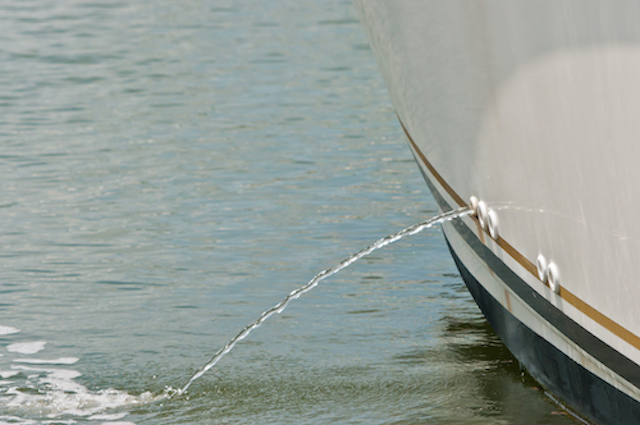Off-Season Checks for Bilge Pump System

One of the items that gets taken for granted during the spring prep work is the bilge pumping system; it’s one of those on-board features that many of us assume is in working order, until something goes wrong.
Water can get into your boat in a variety of ways: a leaking shaft-seal (stuffing box), ripped or torn bellows, a leaking through-hull, a leaking tank aboard, windows, hatches and deck fittings that aren’t sealed - the list goes on.
The catch-22 when considering maintenance in the pre-season, is that you may not know where a leak may start or develop until the boat is in the water and only then do you find that water is getting inside. Your bilge-pumping system is often the first and last line of defense for water intrusion – both when you’re aboard, as well as if you’re away from the boat for extended periods.

Transport Canada defines the type of bilge-pumping arrangements that are required aboard based on the size and layout of your boat. Small fishing boats and the like can carry a portable manual pump but for a boat with an interior there are three types of systems:
1) Manual – meaning that the pump is primed and operated by manually pumping a lever, handle or foot-pedal. Many sailboats have these installed and accessible from the cockpit area.
2) Electric – rather than pumping manually, these pumps are powered by the boat’s 12V system battery. A helm switch allows the operator to turn the pump on and off to remove excess water.
3) Electric with a float – These pumps operate via 12V power, but have the added perk of having a float – meaning that as the water level in the bilge rises, the rising water cases a floating level to rise, which engages the pump. Once the water level drops back down, the float settles to a lower level, allows the pump to turn off. If water is entering the boat continuously, the cycle will repeat regularly.

Bilge Pumps an ideal system will have a few components:
1) A separate pump in each water-tight compartment. Some boats have bilges that are completely closed off from other areas of the vessel, other bilges have limber holes drilled to allow water to flow between sections
2) Bilge pumps (and corresponding floats) should be placed in the lowest part of the bilge
3) A bilge pump with a float should be placed in the area of the boat where water pools and collects
4) Particular care should be taken in engine spaces when water collects – it is illegal to pump contaminated water overboard. Contaminants may include oil, fuel, waste, lubricants and chemicals.
Drip pans and oil absorbent socks or rags should be used in engine spaces to ensure that contaminants aren’t discharged overboard.
5) Every bilge pump on a float should have the ability to operate independent of the float (a ‘manual’ vs ‘automatic’ mode).
6) Every electrical bilge pump should have a back-up power source, or a manual pump available. This point is especially important for smaller boats, not connected to shore power, and the bilge pump operates on a float: in periods of heavy rain, or in the event of a leak, the float operated pump could cycle regularly and drain the battery.
At best, this means your next visit to the boat is ruined.
At worst, the bilge pump won’t have enough power to continue to pump water overboard, causing the boat to flood and sink. In this case, consider installing a high-water alarm, or a solar-powered trickle charger if shore power isn’t an option.

Before launching this year, here’s a short list of bilge pump maintenance items:
1) Keep the bilge clean – remove any water, oil, grunge, and debris. Oil and grunge can gum up the pivot points on floats, and small bits of debris (like cut-off zip ties) can block the pump motor from spinning
2) Remove the pump from its housing and check to ensure that the rotors at its base spins freely. Clean the strainer and ensure that the hardware and clips will keep the pump correctly in position
3) Test both the electric and manual pumps. Make sure that they not only turn on, but that they are also capable of pumping water overboard.
4) Test floats by pivoting up and down by hand, but also ensure that they cycle correctly when water enters the compartment.
5) Check hoses running from the pump to the through-hull. Look for wear, and damage, and ensure that each end of the hose is clamped tightly
6) Check the wiring running to electric pumps – ensure that any wire connections are water tight, corrosion free, and that wire runs are clean, and above the level of water commonly found in the bilge. Ensure that a fuse or breaker is installed appropriately
One of my favorite boating maxims: water is supposed to stay on the outside of the boat. With a little maintenance and planning, we can keep it that way.